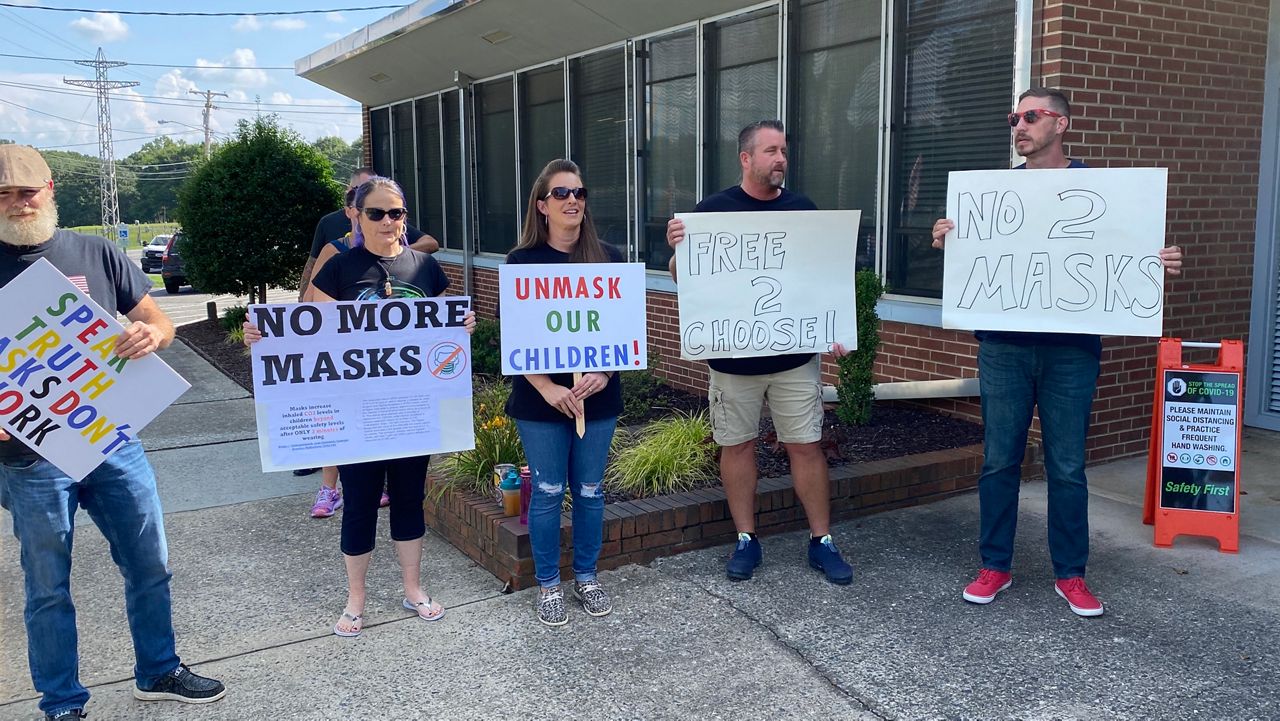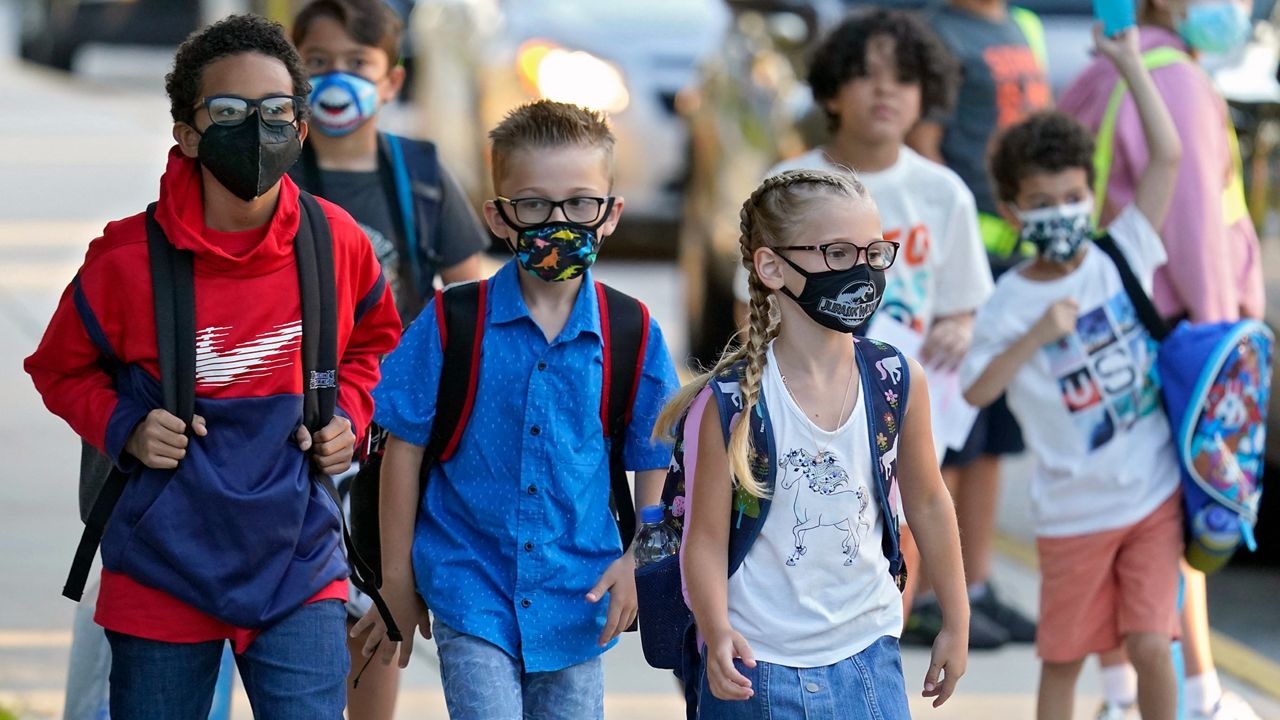A study of 61 school districts with more than 1.1 million students between them found requiring masks works to cut down coronavirus transmission.
Researchers with Duke University’s ABC Collaborative studied COVID-19 infection rates in the first half of the 2021-2022 school year and compared districts with different classroom mask rules.
“The results of this study clearly show that universal masking reduces school transmission of COVID-19 when compared to optional masking,” said Dr. Danny Benjamin, co-chair of the research group.
The new peer-reviewed research was published Wednesday in the journal "Pediatrics." The study included data from school districts in nine states from late-July until mid-December, through the delta wave and the first weeks of the omicron surge.
The findings line up with the results of earlier studies, Benjamin said.
“As more students have returned to school, masking and vaccination of children 5 years and older have remained the most practical and effective mitigation strategies to keeping students healthy and learning in-person,” he said.
Requiring masks inside school buildings reduced coronavirus transmission by 72% when compared with school districts that did not have mask mandates, the research found.

“After taking into account the size of the school districts and how many weeks the districts contributed data, masked schools saw up to 87% less transmission,” the researchers said in a statement Wednesday.
The districts that participated in the research study included 1,112,899 students and 157,069 staff in K-12 schools, according to researchers.
“The districts reported 40,601 primary and 3,085 secondary infections,” the study states. That means more than 90% of the COVID cases in the study came from community transmission outside schools.
Of the 61 school districts in the study, 46 had universal mask rules, nine had partial mask rules and six did not require masks.
The secondary transmission rates in schools with optional masks was 3.6 times higher than in schools that required everyone to wear face masks, the study found.
“For every 100 community-acquired cases, universally masked districts had 7.3 predicted secondary infections, while optionally masked districts had 26.4,” the study states.
The study included 29 districts from North Carolina, 23 from Wisconsin, three from Missouri, and one each from California, Washington, Georgia, Tennessee, Kansas and Texas.
The researchers worked with school districts to help monitor COVID-19 transmissions and evaluate their policies.
“Maintaining in-person instruction is critical for children,” said Duke’s Dr. Kanecia Zimmerman, co-chair of the ABC Science Collaborative.
“Providing districts with the ability to monitor transmission data in real time and in response to changing policies allows them to shape their mitigation efforts during an evolving pandemic.”
School mask policies have become a political question, with school board debates and parent protests around the country since this school year began.
But coronavirus numbers are dropping around the United States since the omicron surge spiked in January. Many of the largest school districts in the country, including New York City and Los Angeles, have moved to make masks optional.
“The findings in this study are important,” Zimmerman said. “Especially in times with higher community infection rates and more transmissible variants, masking is a critical safety effort to support continued, in-person education.”



